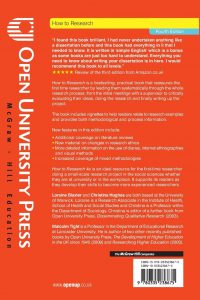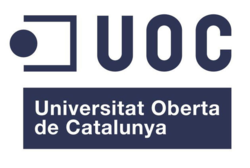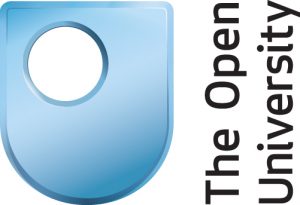50 objects for 50 years. No 5. The logo
Walter Perry, the University’s Vice-Chancellor is said to have had the idea for the original logo in 1969 and Douglas Clark, Director of Design produced it. Something like 40 versions were produced with different proportions and different positions for the the roundel, the‘O’. Perry and Clark argued for the roundel not to be centred and won. The BBC objected, because it felt that as the logo would appear on the television the Corporation should make the decision.
Looking at the logo of the simple circle of a moon (O) in the dark sky of the U reminds me that the OU has taken over from night schools. These opportunities for part-time adult study had developed in the UK in association with industrialisation. The first opened in Salford in 1772 was aimed at for adult mechanics. Similar institutions followed as did sandwich courses at universities, university courses for non-enrolled students, and a London Society for the Extension of University teaching. Outside the HE system the WEA was founded 1903. Harold Wilson’s original idea was to connect existing extramural departments, the WEA, broadcasters, correspondence courses and night classes together to create a scheme for degrees to be awarded by an established university. He did not initially envisage an institution with a charter and autonomy but a consortium of existing universities using television and the post. When creating the OU Jennie Lee MP was keen to stay well away from that image of adult education.
We have a great tradition of adult education in this country but we have to be careful that it does not become a little dowdy and mouldy. The days when people would go out to the old-fashioned night schools and sit on hard benches are receding. They are now looking for a different kind of environment. There was a kind of passion for hair shirts from hon. Members opposite today, a passion I do not share.
Here Romy Wood shares her thoughts on how University branding could help or hinder learners. She suggests that there might be people for whom the word ‘university’ is off-putting. For some it ‘might bring to mind for older people late night BBC programmes where men in corduroy jackets pointed at blackboards’.
The RP37A VHF Herald Hacker radio was issued for use in Study Centres. The OU version was blue and had the logo in place of the local stations. It had a telescopic aerial and was an FM-only radio as in the early 1970s, OU television programmes were on BBC2 and radio programmes on Radio 3 VHF.

Perhaps the O is also a globe, for the OU logo is familiar around the world and the OU is a global brand. Most other distance learning universities have the name ‘Open’ in their title. The Catalan logo echoes that of the British one.
The unlocked lock of the Netherlands also pays homage to the original. It is echoed in the Australian version.
One can see the O resting in the U in India’s version.
Pakistan’s Allama Iqbal OU might be seen to include a moon, but it is crescent not a full moon. Nevertheless it retains the word Open.
An exception is the Open University of Japan (放送大学, Hōsō Daigaku. It was, until 2007, called (in English) The University of the Air. The focus of the name was on the medium, not the message. Perhaps that swoosh might be television signals.
The OU logo has been available in a variety of media. It became mobile on the television screen, with the O turning. The image became synonymous with learning. In the TV series Life on Mars (first broadcast 2006–07) the time-travelling central character’s understanding of his situation was significantly improved through a late night OU-style television programme which offered highly relevant knowledge. It has changed over time. Here is a striped version.
There was also a 21st century, rather more glassy, variant. It still retains that ‘O’ and ‘U’ combined reminiscent of Barbara Hepworth (whose son taught at the OU) and also resembling the coat of arms such as one might expect from a venerable educational institution. The OU does have a Coat of Arms and that may well feature in another week.
The current version is very similar to the original. Perhaps you have memories of the introduction of the updates? There was even a signature tune to accompany it. This was the first five bars of Leonard Salzedo’s 1959 composition, Divertimento. However, that piece of music, is an object (if that is best term) for another day. Information on the history of the logo can be found in ‘Armorial Bearings of The Open University’ by N. Woods (1992).







